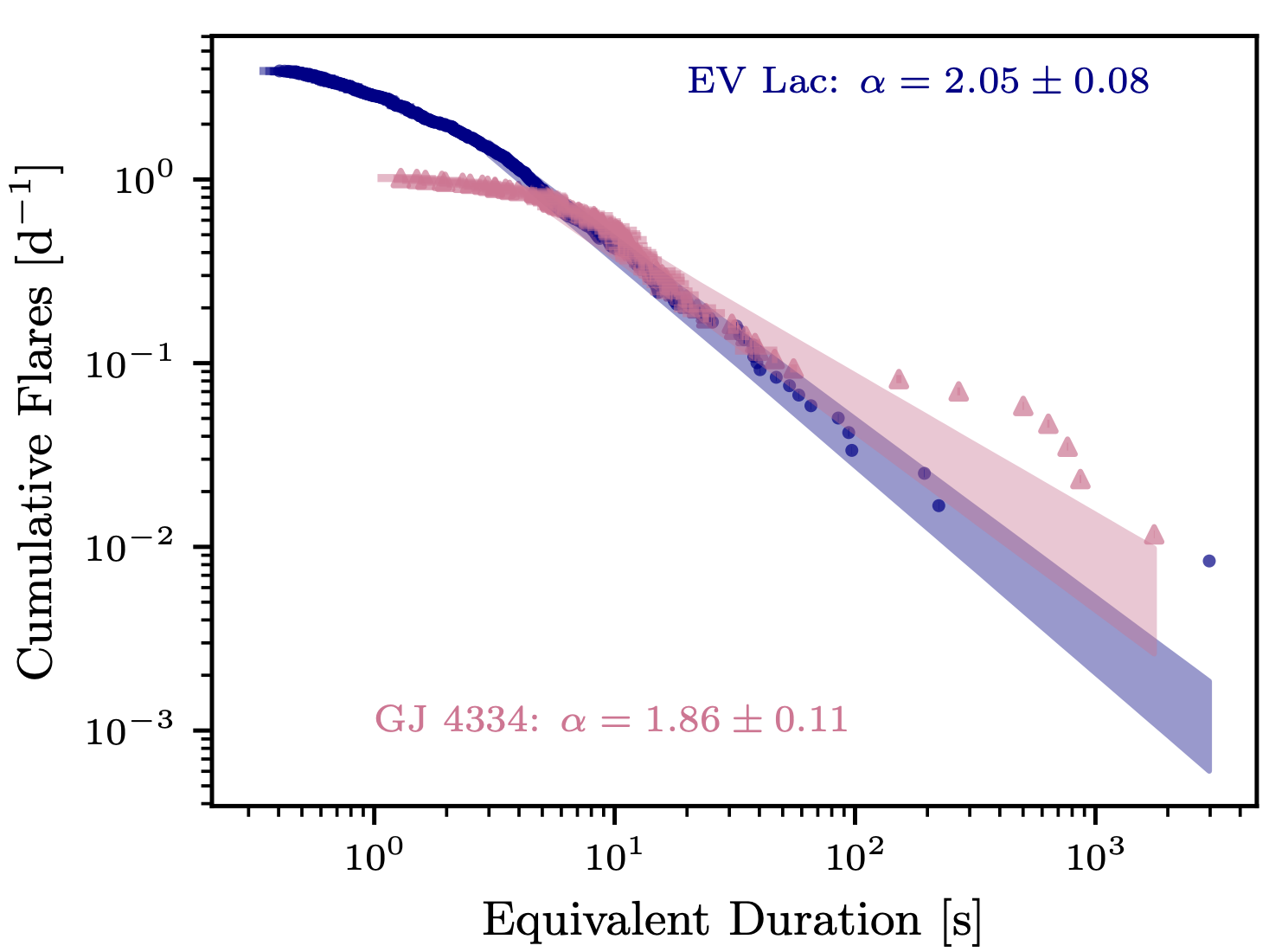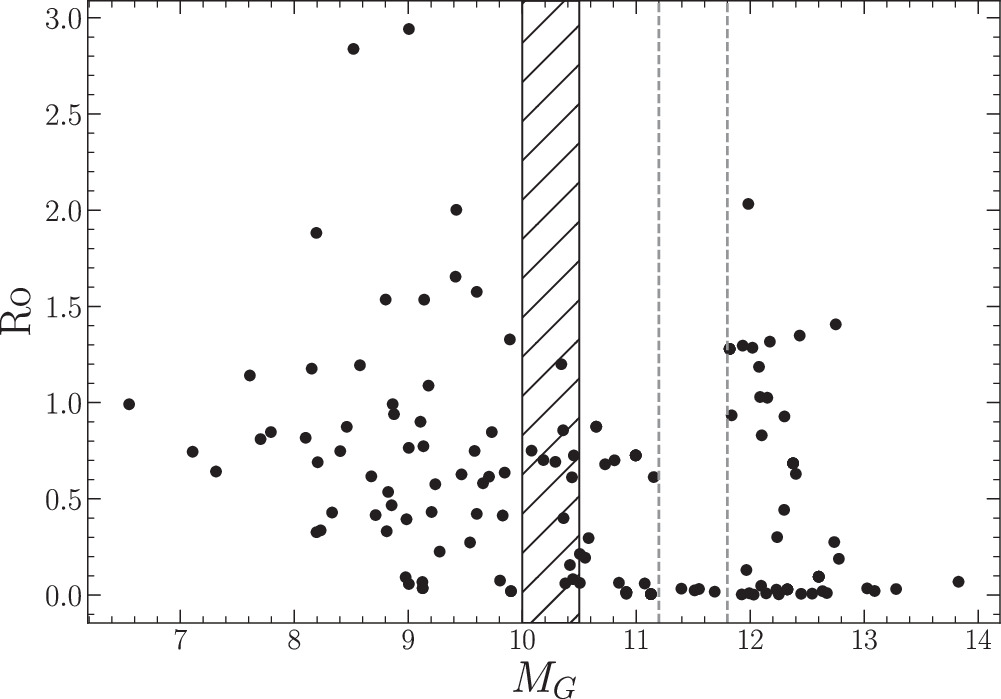Collaborations
Projects in which I've collaborated on. Topics vary from flare analysis, rotation modulation analysis, TESS, TESS team exoplanet detections and TESS binary systems.
Activity and Structure of Low Mass Stars: Rossby Number, Mass, and a New Diagnostic
Currently in the review process.
FUMES IV: An Optical and Far Ultraviolet Flare on GJ 4334.
GJ 4334 is a fully convective M dwarf with 23.5 rotation period. This paper dives into the flares in spectra observed contemporaneously by Hubble in the FUV and the Apache Point Observatory in the Optical. It also compares flaring behavior to an M dwarf with similar mass, EV Lac (albeit younger and more active), which has a rotation period around 4 days. While there is overlap, despite EV Lac being the faster rotator, GJ 4334 shows an more frequent large flares. In the paper it is posed that this is likely due to more CMEs and loss of angular momentum. The frequency of its large flares is represented by the flattening of the FFD distrubtion slope (Figure 2).
My part: I conducted flare analysis such as flare identification and equivalent duration calculations using altaipony (Ilin et al. 2021), stella (Feinstein et al. 2020a,2020b), and numeric integration. I also contributed to writing the "TESS Analysis" section. We used all available TESS 2-min cadence sectors for GJ 4334, and EV Lac.
To learn more about contemporaneous Optical and FUV spetral lines observations of GJ 4884 Read Paper Here!

Correlations between Ca II H and K Emission and the Gaia M Dwarf Gap
Using Gaia DR2 to create a color-magnitude-diagram, Jao et al. (2018) discovered a gap at around an absolute G magnitude of 10, where there is 17% less stars. This gap, called the Jao Gap, is thought to be the transition in which stars experience instabilities in their internal structure that yields rapid loss of spin and sharply reduces magnetic activity. The latter was shown in Halpha (Jao et al. 2023), while in this paper we show that a similar trend is present in Ca II H & K with an variability increase at absolute G magnitude ∼11. However, there is also a similar trend in Rossby number or the rotation period over convective turnover timescale at a lower absolute magnitude (dip around absolute G magnitude 11; Figure 1).
My part: I conducted flare removal with stella (Feinstein et al. 2020a,2020b) and rotation period estimates with starspot (Angus & Garcia Soto 2023). I also contributed to writing the "Rotation" subsection.
To learn more about the potential physics behind this gap Read Paper Here!

Other papers
- Fausnaugh, M., et al. (incl. García Soto, A.) 2021, Publications of the Astronomical Society of the Pacific, 133, 1027, 095002. The TESS Mission Target Selection Procedure.
- Guerrero, N. M., et al. (incl. García Soto, A.), 2021. The Astrophysical Journal Supplement Series, 254, 39. The TESS Objects of Interest Catalog from the TESS Prime Mission.
- Rowden, P., et al. (incl. García Soto, A.) 2020. The Astronomical Journal, 160, 76. TIC 278956474: Two Close Binaries in One Young Quadruple System Identified by TESS.
- Parviainen, H., et al. (incl. García Soto, A.) 2020. Astronomy & Astrophysics, 633, A28. MuSCAT2 multicolour validation of TESS candidates: an ultra-short-period substellar object around an M dwarf.
- Huber, D., et al. (incl. García Soto, A.) 2019. The Astronomical Journal, 157, 245. A Hot Saturn Orbiting an Oscillating Late Subgiant Discovered by TESS.
- Rodriguez, J. E., et al. (incl. García Soto, A.) 2019. The Astronomical Journal, 157, 191. An Eccentric Massive Jupiter Orbiting a Subgiant on a 9.5-day Period Discovered in the Transiting Exoplanet Survey Satellite Full Frame Images.
- Dragomir, D., et al. (incl. García Soto, A.) 2019. The Astrophysical Journal, 875, L7. TESS Delivers Its First Earth-sized Planet and a Warm Sub-Neptune.